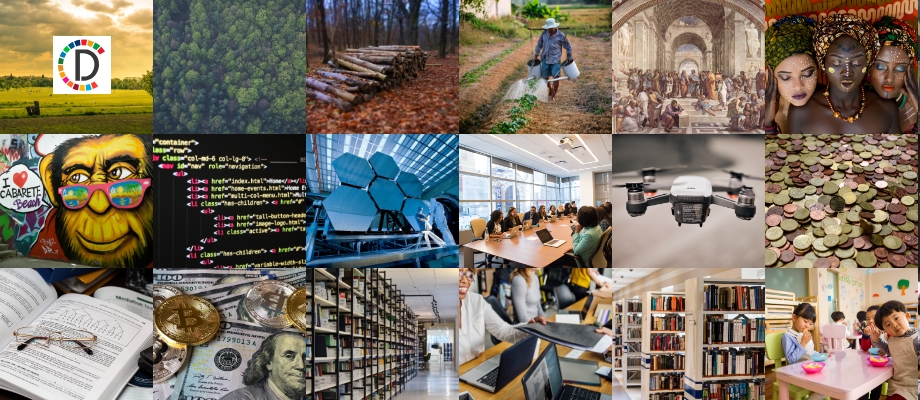UN data shows Muslims and STs move out of poverty faster than majority in India

- Country:
- India
Poverty reduction was fastest among children, the poorest states, scheduled tribes, and Muslims in India wherein a historic shift over 270 million people moved out of poverty in the decade since 2005-06, according to a new data.
According to the 2018 global Multidimensional Poverty Index (MPI) released here by the United Nations Development Programme (UNDP) and the Oxford Poverty and Human Development Initiative (OPHI), about 1.3 billion people live in multidimensional poverty globally.
This is almost a quarter of the population of the 104 countries for which the 2018 MPI is calculated. Of these 1.3 billion, almost half - 46 percent - are thought to be living in severe poverty and are deprived in at least half of the dimensions covered in the MPI, it said.
While there is much that needs to be done to tackle poverty globally, there are "promising signs that such poverty can be - and is being - tackled."
The Index noted that in India, 271 million people moved out of poverty between 2005-06 and 2015-16. The poverty rate in the country has nearly halved, falling from 55 percent to 28 percent over the ten-year period.
India is the first country for which progress over time has been estimated.
"Although the level of poverty – particularly in children – is staggering so is the progress that can be made in tackling it. In India alone some 271 million have escaped multidimensional poverty in just ten years," UNDP Administrator Achim Steiner said.
The data noted that a change of global proportions occurred in India. Between 2005-06 and 2015-16, the number of multidimensionally poor people in India fell from 635 million to 364 million – a historic shift.
Furthermore, in sharp contrast with the trend 1999 to 2006, when the poorest groups reduced multidimensional poverty the slowest, from 2005-06 to 2015-16 the poorest reduced MPI the fastest.
"That is, poverty reduction among children, the poorest states, scheduled tribes, and Muslims was fastest, indicating that, far from being left behind, they were catching up," it said.
"India has made momentous progress in reducing multidimensional poverty. The incidence of multidimensional poverty was almost halved between 2005-06 and 2015-16, climbing down to 27.5 percent," it said.
It said that for the Scheduled Caste, the MPI fell from 0.338 in 2005-06 to 0.145 in 2015-16. For Other Backward Classes, the MPI fell from 0.291 in 2005-06 to 0.117 in 2015-16.
In the case of Muslims, the MPI fell from 0.331 in 2005-06 to 0.144 in 2015-16. For the Scheduled Tribes, the MPI fell from 0.447 in 2005-06 to 0.229 in 2015-16.
It noted that the landscape of the poorest has improved dramatically and, if current trends continue, is set to change.
The poorest groups – across states, castes, religions, and ages – had the biggest reductions in MPI 2005-06 to 2015-16, showing that they have been "catching up," though they still experience much higher rates of poverty.
"This marks a dramatic reversal," it said, adding that from 1998-99 to 2005-06 the opposite trend prevailed: India's poorest groups had the slowest progress.
Among states, Jharkhand had the greatest improvement, with Arunachal Pradesh, Bihar, Chhattisgarh, and Nagaland only slightly behind. However, Bihar is still the poorest state in 2015-16, with more than half of its population in poverty.
In 2015-16, the four poorest states – Bihar, Jharkhand, Uttar Pradesh, and Madhya Pradesh – were still home to 196 million MPI poor people – over half of all the MPI poor people in India.
The data noted that the "positive trend" of pro-poor poverty reduction is seen also across religions and caste groups. In both cases, the poorest groups (Muslims and Scheduled Tribes) reduced poverty the most over the ten years from 2005-06 to 2015-16.
Yet these two groups still have the highest rates of poverty. For instance, while 80 percent of those who identified themselves as being in a Scheduled Tribe had been poor in 2005-06, in 2015-16, 50 percent of people belonging Scheduled Tribes are still poor.
Within India, 40.4 million people live in districts where more than 60 percent of people are poor – 20.8 million live in the poorest districts in Bihar, 10.6 million in the poorest districts in Uttar Pradesh, and the remainder in the poorest districts in Chhattisgarh, Gujarat, Jharkhand, Madhya Pradesh, and Odisha.
Between 2006 and 2017, the life expectancy increased over seven years in Sub-Saharan Africa and by almost four years in South Asia, and enrollment rates in primary education are up to 100 percent. This bodes well for improvements in multidimensional poverty.
The estimates further showed that half of all people living in poverty are younger than 18 years old. The new figures show that in 104 primarily low and middle-income countries, 662 million children are considered multidimensionally poor. In 35 countries half of all children are poor.
The 2018 figures, which are now closely aligned with the Sustainable Development Goals, cover almost three-quarters of the world’s population.
Multidimensional poverty is found in all developing regions of the world, but it is particularly acute – and significant – in Sub-Saharan Africa and South Asia.










